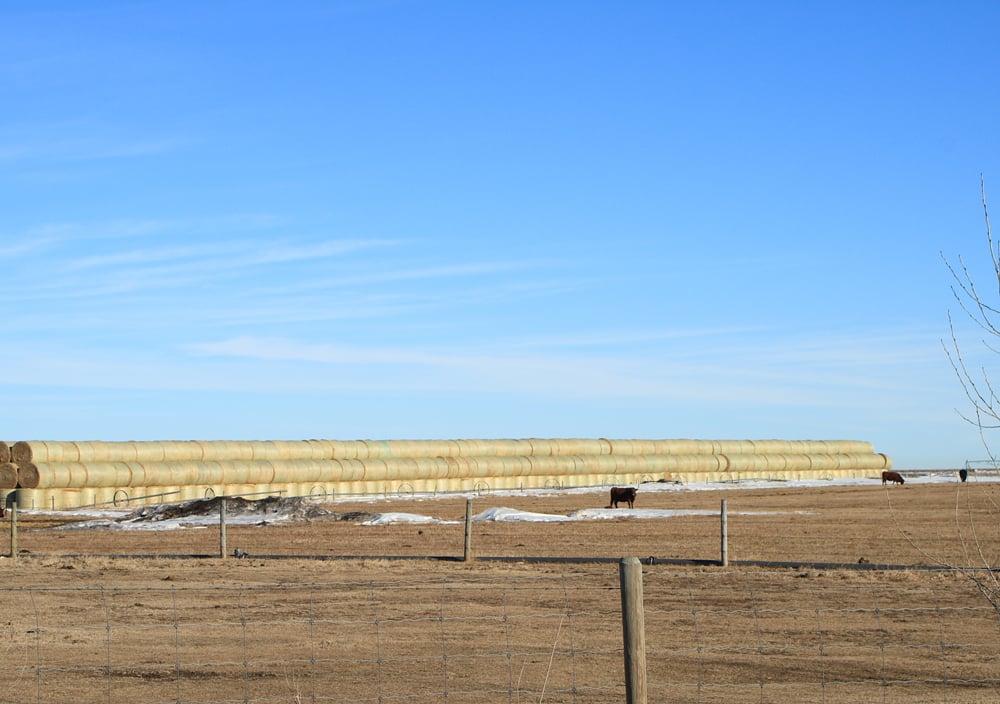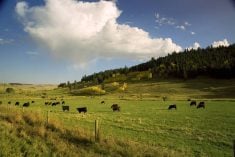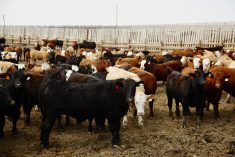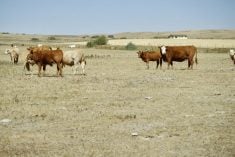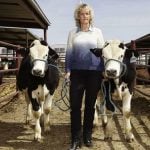Editor’s note: After the June issue of Canadian Cattlemen went to press, it was announced that lending operations involving the Picture Butte Feeder Cooperative would resume on May 26. Read that story at the Western Producer, here.
[UPDATED: June 19, 2025] On January 27, an order from Alberta Agriculture and Irrigation suspended Picture Butte Feeder Cooperative from making any further advances to its members after the co-op failed to comply with some sections of the Feeder Associations Guarantee Act. Tony Ankermann, Picture Butte Feeder Cooperative vice-chair and board member, issued an affidavit on February 18. The minister’s order, outlining the government’s findings, was attached to the affidavit.
Read Also

Building demand together: The impact of Canada’s beef import levy
The beef import levy has become a central tool for ensuring balance in Canada’s beef industry
As of January 2025, the co-op owed around $281 million to its lenders under the credit agreement.
But how did this situation occur, and what are the implications for producers? Here’s what you need to know.
Feeder Associations of Alberta
Feeder co-ops have been part of the Alberta beef industry for nearly 90 years. They started to help producers with financing, marketing and cattle feeding. Producers often lacked the needed investment capital, so feeder co-ops were created to provide that.
A feeder co-op includes producers who combine their resources, alongside the Alberta government and lending institutions, to create economical ways of financing feeder cattle. Without them, individual producers might not be able to access affordable financing. Feeder association members can also access industry connections and resources, the Feeder Associations of Alberta website notes. Individual members and corporations may obtain up to $3 million worth of livestock, with board approval.
There are 45 local feeder associations in Alberta. Picture Butte Feeder Cooperative is the largest one, formed in 1991.
Feeders Association Loan Guarantee Program
Started during the Great Depression, the Feeders Association Loan Guarantee Program provides capital to producers to feed cattle through low-interest, leveraged financing, backed by a government guarantee.
In an average year, this program finances 17 to 24 per cent of the calf crop. To be eligible, a producer must be over 18, own or lease farmland and be approved by a local feeder association.
Provincial inspectors are assigned to each local feeder association through this program. According to the provincial government’s website, inspectors follow inspection procedures that minimize risk and protect feeder association members, lenders and the government guarantee.
In the case of the Picture Butte Feeder Cooperative, there were allegations of mismanaged finances. According to the minister’s order, the co-op allegedly:
- Accepted ineligible feeder members.
- Used guaranteed loan proceeds on behalf of members who had withdrawn from the co-op and for purposes not allowed under the regulations.
- Provided more advances than allowed.
- Obstructed provincial inspections, among other violations.
The amount owing to the Picture Butte Feeder Cooperative by their members as of January 31, 2025, was $281,266,976. This is from two types of loans — purchase loans and equity loans.
Purchase loans help new or existing members finance the purchase of livestock for growing and/or finishing. Equity loans provide existing members with advances, where a member has equity in their existing livestock.
Alberta Agriculture and Irrigation undertook inspections of the Picture Butte Feeder Cooperative between September 7, 2023, and May 15, 2024, under the Feeders Association Loan Guarantee Program. The government then issued an order under the Feeders Association Guarantee Act that prevented the co-op from making any more advances to their members under the loan guarantee program.
“Our members depend on a trustworthy and functional loan guarantee program. We support any actions that uphold the program’s principles and ensure its continued success for cattle feeders across Alberta,” Alberta Cattle Feeders’ Association chair Keith Gregory said in a press release.
The press release went on to say the Alberta Cattle Feeders Association is not affiliated with the Feeder Association Loan Guarantee Program. However, the cattle feeders will continue to support the loan guarantee program and ensure it “remains viable and available to producers who need it, ensuring the intent of the program continues to be met.”
Inspections
Feeder associations get inspected twice per year if they participate in the Feeders Association Loan Guarantee Program, to ensure they are complying with its rules and regulations.
According to an emailed statement from the Alberta government, inspectors monitor the monthly purchases of each association plus the monthly bank statements for any overdue accounts and/or irregularities. Inspections consist of members’ files and association records. Between October and April, there is also a field inspection to confirm cattle are properly branded or identified, the correct number of cattle are present and they are in good condition.
“Loan guarantees are granted by the Treasury Board and Finance in respect to the repayment of loans made to feeder associations. Inspections are carried out to ensure the feeder associations are being run in a sound business manner,” notes the government statement.
According to the minister’s order, Picture Butte Feeder Cooperative obstructed the inspections and failed to provide reasonable assistance. Specifically:
- Co-op staff refused to speak to inspectors.
- The co-op used non-disclosure agreements with staff in a way that prevented them from speaking with inspectors.
- The co-op chair interfered with attempts to interview a relevant witness.
- The co-op didn’t respond to the inspector’s questions about amended board minutes.
Ankermann’s affidavit notes that some of the ministry’s findings are the “subject of significant dispute by certain parties.”
In addition, Picture Butte Feeder Cooperative’s administration and board was alleged to have “unsound practices.” From the administration, these include:
- Allowing memberships reliant on powers of attorney.
- Preparing or accepting irregular powers of attorney and other legal documents.
- Accepting documents with irregular signatures.
- Accepting documents that may have not been properly executed or witnessed.
- Using equity advances in payment of security deposits.
- Failing to reduce the risk of member default.
- Failing to update sales records in a timely way.
- Processing transactions in the names of members who had withdrawn.
- Failing to keep adequate board minutes and financial records.
From the board, the alleged unsound practices include:
- Failing to consider membership eligibility requirements.
- Failing to consider appropriate monetary limits for new members.
- Permitting a high proportion of related transactions.
- Failing to keep adequate financial statements.
- Failing to address conflicts of interest.
- Providing excessive board compensation and expenses.
- Failing to hold an annual general meeting in a timely manner.
What’s next?
A couple of weeks after the ministerial order was released on February 7, officials from the Feeder Associations of Alberta met with ministry officials to determine what needed to happen to get the order lifted. The Feeder Associations of Alberta provided Picture Butte Feeder Cooperative with a list of action items following that meeting.
The co-op board then requested a restructuring officer. Ankermann’s affidavit stated the action items required to lift the order would require many personnel and operational changes, which he and other board members believed would require help from professionals outside of the co-op.
The request for a restructuring officer was granted on February 21.
A restructuring officer leads a company through financial hardships or operational crises, restructures operations, helps stabilize the organization, manages debt and works to make the company profitable again. Alvarez and Marsal was named the restructuring officer for the co-op.
In the affidavit, Ankermann says he expects the appointment of a restructuring officer to lead to comprehensive corporate governance policies and procedures, the hiring of a new administrator and supervisor, the election of a new board and, eventually, resuming operations.
“The decision to commence these proceedings and request that a restructuring officer be appointed was not taken lightly. I am very mindful of the uncertainty that currently surrounds (Picture Butte Feeder Cooperative) among its members, and the considerable stress that has caused, including confusion and disruption to their operations,” Ankermann says in the affidavit.
In April, the Alberta Cattle Feeders Association discussed the allegations against the Picture Butte Feeder Cooperative at a board meeting. Alberta Agriculture and Irrigation and Alvarez and Marsal also held a closed-door meeting for co-op members. At time of writing, negotiations continued to reinstate the Feeders Association Loan Guarantee Program to the Picture Butte Feeder Cooperative.
However, by late April, Alvarez and Marsal said it was getting close to a solution. The firm had hired Cody McBride as the local supervisor for the co-op. McBride has more than 25 years of experience in the agriculture and finance sectors, including running feeder finance companies, working as a brand inspector and in agriculture lending. Alvarez and Marsal will also be hiring a permanent, full-time administrator.


